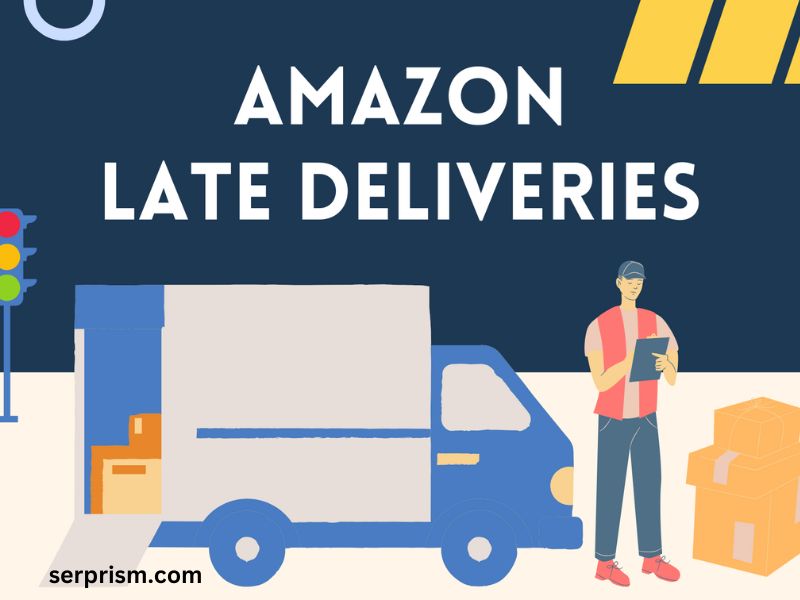
In recent years, Amazon has become synonymous with fast and reliable delivery. The company’s Prime membership, which promises two-day delivery (and often even faster), has been a major selling point, luring millions of customers into its ecosystem. However, recent trends suggest that Amazon is struggling to meet these high standards, with late deliveries becoming a growing concern for both consumers and the company itself.
The Rise of Amazon Prime and the Promise of Fast Delivery
Amazon Prime was launched in 2005, offering members expedited shipping, along with other benefits such as access to streaming services and exclusive deals. The allure of getting products delivered within two days, or even the same day in some cases, was revolutionary and set a new standard for e-commerce. Amazon’s logistics network, which includes fulfillment centers, a dedicated fleet of trucks, and even its own air cargo operations, was designed to ensure that it could meet these delivery promises.
For years, Amazon was able to fulfill its promise of quick delivery with remarkable consistency. Customers came to rely on Amazon for last-minute purchases, confident that their items would arrive on time. This reliability was a key factor in Amazon’s meteoric rise, helping the company dominate the e-commerce landscape and making it one of the most valuable companies in the world.
The Growing Issue of Late Deliveries
Despite its extensive logistics network and technological prowess, Amazon has been facing increasing challenges in maintaining its delivery promises. Over the past few years, there has been a noticeable uptick in late deliveries, leading to frustration among customers and raising questions about the sustainability of Amazon’s fast delivery model.
Several factors have contributed to the rise in late deliveries. One of the most significant is the sheer volume of orders that Amazon now handles. The company’s growth has been staggering, and with more customers than ever relying on Amazon for everything from groceries to electronics, the pressure on its logistics network has intensified. During peak shopping periods, such as the holiday season or during special sales events like Prime Day, the volume of orders can overwhelm even Amazon’s robust system.
The COVID-19 pandemic further exacerbated this issue. The surge in online shopping during the pandemic put unprecedented strain on Amazon’s logistics operations. At the same time, the company had to implement safety protocols in its warehouses and delivery operations, which slowed down the process. While Amazon made significant efforts to adapt, including hiring thousands of additional workers and expanding its delivery network, late deliveries became more common.
Another factor contributing to the increase in late deliveries is the growing complexity of Amazon’s supply chain. As the company has expanded its product offerings, it has had to manage an increasingly complex network of suppliers, manufacturers, and logistics partners. Any disruption in this chain, whether due to supply shortages, transportation delays, or other issues, can lead to delays in getting products to customers.
The Impact on Customers
For consumers, the rise in late deliveries has been a significant source of frustration. Many customers have come to rely on Amazon’s fast delivery for their day-to-day needs, and when those deliveries are delayed, it can cause real problems. For example, someone who orders a last-minute gift for a special occasion or an essential household item may be left in the lurch if their package doesn’t arrive on time.
The issue is compounded by the fact that Amazon often provides optimistic delivery estimates that it struggles to meet. Customers may be told that their package will arrive within two days, only to find out that it has been delayed by several days or even longer. This can lead to disappointment and erode trust in the company’s reliability.
Late deliveries also create additional hassle for customers who may need to follow up with Amazon to track their orders or request refunds. While Amazon’s customer service is generally responsive, the inconvenience of having to deal with a late or missing package can be a major annoyance.
The Financial Impact on Amazon
The increase in late deliveries doesn’t just affect customers; it also has financial implications for Amazon. The company has built its brand on the promise of fast, reliable delivery, and when it fails to deliver on that promise, it risks damaging its reputation. In a highly competitive e-commerce market, where customers have numerous alternatives to choose from, any decline in customer satisfaction can lead to a loss of business.
Moreover, late deliveries can be costly for Amazon. The company often provides compensation to customers when their deliveries are delayed, whether in the form of refunds, discounts, or extended Prime memberships. While these gestures are important for maintaining customer goodwill, they also eat into Amazon’s profit margins.
In some cases, Amazon may also face penalties from third-party sellers who rely on the platform to reach customers. These sellers often have their own delivery guarantees, and when Amazon fails to meet them, it can result in financial penalties or strained relationships with these important partners.
The Challenges of Scaling Delivery Operations
One of the biggest challenges Amazon faces in addressing the issue of late deliveries is the sheer scale of its operations. Amazon’s logistics network is vast, but it’s also incredibly complex. The company has to coordinate the movement of millions of products from suppliers to fulfillment centers, and then from those centers to customers, all while managing variables like weather, traffic, and labor availability.
As Amazon has grown, so too has the complexity of its logistics operations. The company now operates hundreds of fulfillment centers around the world, and it has invested heavily in automation and robotics to streamline its processes. However, even with these advancements, there are limits to how quickly and efficiently Amazon can process and deliver orders, especially during periods of high demand.
Labor shortages are another significant challenge. The logistics industry as a whole has been grappling with a shortage of workers, particularly in key roles like truck drivers and warehouse staff. Amazon has been no exception, and the company has had to offer higher wages and better benefits to attract and retain workers. While these efforts have helped, they have also increased costs and added pressure to an already stretched system.
Technological Solutions and Innovation
To address the issue of late deliveries, Amazon has been investing heavily in technological solutions and innovation. The company has been a pioneer in the use of automation and robotics in its fulfillment centers, which has helped to speed up the processing of orders. Amazon has also been exploring the use of drones and autonomous vehicles for last-mile delivery, with the goal of reducing delivery times and improving efficiency.
In addition, Amazon has been leveraging data analytics and machine learning to optimize its logistics operations. By analyzing vast amounts of data on customer orders, delivery routes, and other factors, Amazon can make more informed decisions about how to allocate resources and manage its supply chain. For example, the company can use predictive analytics to anticipate demand spikes and adjust its inventory levels accordingly.
Despite these efforts, the challenge of late deliveries persists. While technology can help to streamline operations and improve efficiency, it can’t completely eliminate the complexities and uncertainties that come with running a global logistics network. Amazon will need to continue innovating and investing in its logistics infrastructure to keep pace with growing demand and maintain its reputation for fast delivery.
Looking Ahead: The Future of Amazon’s Delivery Operations
As Amazon looks to the future, it faces a delicate balancing act. On the one hand, the company needs to continue meeting the high expectations of its customers by delivering products quickly and reliably. On the other hand, it must manage the costs and logistical challenges that come with maintaining such a vast and complex delivery network.
One potential solution is to focus on improving the accuracy of delivery estimates. By providing customers with more realistic delivery windows, Amazon can set expectations appropriately and reduce frustration when delays do occur. This may involve using more sophisticated algorithms to predict delivery times based on real-time data.
Another strategy could involve expanding Amazon’s network of local fulfillment centers and delivery hubs. By bringing products closer to customers, Amazon can reduce the distance and time required to complete deliveries, which could help to mitigate delays. This approach would require significant investment but could pay off in the long run by improving delivery reliability and customer satisfaction.
Amazon may also need to rethink its approach to peak shopping periods. Rather than trying to maintain its standard delivery times during these periods, the company could consider offering more flexible delivery options, such as slower shipping for non-essential items or scheduled delivery windows. This would allow Amazon to prioritize its resources for the most critical deliveries while still meeting customer needs.
Conclusion
The increase in late deliveries is a significant challenge for Amazon, one that has implications for both its customers and its bottom line. While the company has made significant investments in its logistics network and technology, the complexities of running a global e-commerce operation mean that delays are sometimes inevitable.
To maintain its position as a leader in the e-commerce industry, Amazon will need to continue innovating and finding new ways to improve its delivery operations. This may involve rethinking some of its current practices, investing in new technologies, and finding ways to better manage customer expectations. Ultimately, the key to Amazon’s success will be its ability to adapt and evolve in response to the changing demands of the market and the challenges of scaling its operations.




